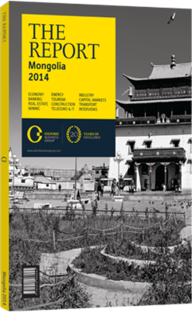OBG talks to Prime Minister Norovyn Altankhuyag

Interview: Norovyn Altankhuyag
What areas of Mongolia’s economy have the most potential to contribute to GDP growth and achieve greater diversification?
NOROVYN ALTANKHUYAG: Since 2012, we have been trying to diversify our economy, and we are currently having discussions and taking actions in this direction. Agriculture is an area that has great potential for growth, especially in animal husbandry, which has two segments in particular that would benefit from development. There is a great opportunity to improve animal husbandry in Mongolia by producing high-quality organic meat and milk for consumption. We also have to focus on producing cashmere, wool and leather products that are of good quality.
In fact, a certain amount of the capital from Chinggis Bonds has been earmarked for the agricultural sector in Mongolia. We want to improve the production of milk, especially in rural areas. We are also looking to refine and expand the production and use of cotton, and increase its subsequent impact on the textile industry. All these segments have an important value today in Mongolia, but the challenge comes with the volume of production, which is quite low. Therefore, we see that there is a real opportunity to boost the production of such high-quality products to help diversify our economy.
What channels is your government exploring to increase revenues towards the state budget?
ALTANKHUYAG: The only thing we need to do is to enlarge our economy. This government is currently not thinking about raising taxes in order to increase revenues towards the state budget. Rather, we are focusing more on improving the business and the investment environment, and we have already taken important steps in this direction to facilitate business operations in the country.
The Parliament, through the extraordinary parliamentary session that took place in September 2013, has taken a number of steps to stabilise and improve the investment climate, in response to the criticism that our government has been subject to. Investors’ primary concern was the lack of stability.
We have already taken action and addressed this issue, and at this moment we can say that our investment climate is more predictable and stable than it was six months ago. Improvements in this area will be our main focus in terms of increasing revenues for Mongolia’s state budget.
To what extent might the availability of a skilled labour force affect Mongolia’s growth?
ALTANKHUYAG: If we look at the current data, the ratio of people with a higher education degree to those who have received a vocational education is 4:1. Therefore, what we need to do is put in place more government policies to change this imbalance and focus heavily on educating more skilled workers in Mongolia. We currently have vocational centres to train workers for labour-intensive jobs, and we also see many private sector companies doing internal training of their own employees to help in this regard. However, more needs to be done in this aspect to improve the situation.
One of the policies that we are looking to implement is designed to increase the number of vocational centres, as well as to change the curriculum at these centres. In the past, there has been too much attention given to the general knowledge of students, whereas fields that entail more practical skills, which are in the end more valuable in the workplace, have been pushed into the background. We need to change this because the use of high-end technology requires more training in practical skills through, for example, simulators.
There is also a general belief that skilled workers cannot earn as much as those who have benefitted from higher education. This is a perception that we are also trying to change, but it will be a long process. We will focus on this issue very carefully to make skilled labour more attractive for young people and encourage them to move in this direction.
How might the current public-private partnership (PPP) model be improved in order to encourage more companies to undertake projects in accordance with this scheme?
ALTANKHUYAG: The term PPP is relatively new for Mongolians. We have little experience in this sense, although we have already started several projects under a PPP scheme. For example, the road that will connect Russia to China through Mongolia is a project that will utilise a PPP model, as will the new CHP5 power plant, with a capacity of 450 MW. Additionally, we are currently in the process of discussing a coal-to-gas plant with Chinese partners. These are large projects and a sign of major steps towards extending the use of a PPP financing model. Seeing more projects come to fruition under this scheme will therefore depend on the overall outcome of pioneering initiatives. We remain confident that the legislation on PPP projects will improve as we gain more experience over the next few years, but what is clear at this point is that the government’s stance with regards to PPP projects is to fully support this concept and make it more accessible.
In what segments is the government planning on spending the remainder of the revenue earned from Chinggis Bonds? When might we see Mongolia issuing a new round of these bonds?
ALTANKHUYAG: The Chinggis Bond money is spent solely on road and railway infrastructure development, building power plants to meet the country’s growing energy demand and on improving our industrial base to diversify our economy, as previously mentioned. For such projects, money from Chinggis Bonds only covers one-third of the cost, specifically in industrial development. The remaining two-thirds needs to come from an alternative source. Parliament gave approval to the government to issue bonds up to a value of $5bn. We have already issued $1.5bn through the first round, which leaves us with $3.5bn to be raised in the future. We are now working on issuing $1bn through the yen-denominated Samurai Bonds, and will continue to explore the best options for issuing bonds for the remaining $2.5bn that have been approved.
What are the challenges to reaching full potential in bilateral relations between Mongolia and China? Do you see any potential risks or difficulties that could present themselves in future?
ALTANKHUYAG: Mongolia has a vast territory and is very rich in natural resources. Additionally, our population is highly educated. These are our advantages. China has significant financial capacity, is a big market and the second-largest economy in the world. Therefore, if we can find common ground for our country to fully cooperate with China, it will be a win-win situation for both parties.
There are several areas where our countries can collaborate. We can work together on expanding the amount of coal that is being exported to China, which is now set for the next 20 years to increase to 1bn tonnes. This will bring approximately $15bn in revenue into Mongolia. We are also looking to build up the thermal coal industry and increase exports to China, as well as collaborating on the development of our railway.
There are plenty of sectors and areas where we can and should cooperate, but we must first find a common language for both parties to be able to benefit. In this regard, we can consider my recent visit to China at the end of October 2013 very successful as it demonstrated the will of both of our countries to find this common ground and work together more earnestly from this point forward. We remain confident that our relationship will boost economic and commercial projects in the future.
You have reached the limit of premium articles you can view for free.
Choose from the options below to purchase print or digital editions of our Reports. You can also purchase a website subscription giving you unlimited access to all of our Reports online for 12 months.
If you have already purchased this Report or have a website subscription, please login to continue.

